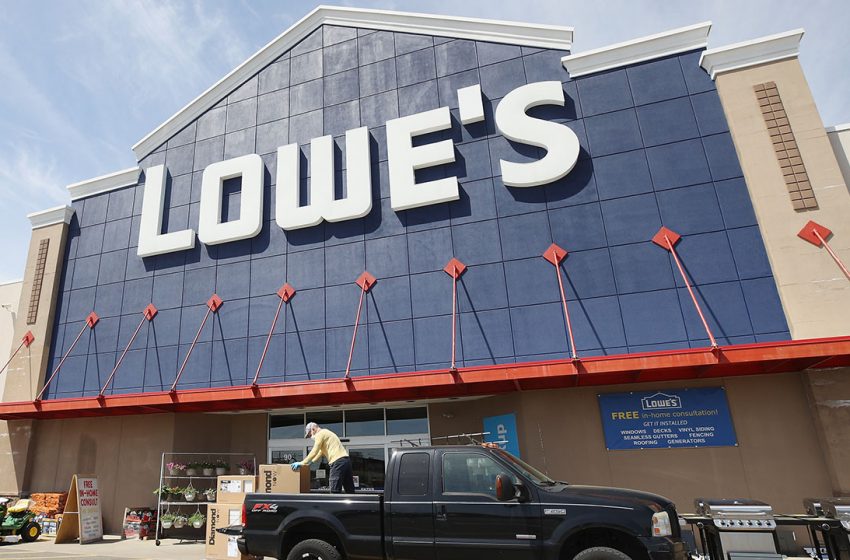Lowe’s CEO reveals key to staying competitive in retail

close video Reemergence of physical retail ‘exceptionally strong’ since pandemic: Tom McGee
International Council of Shopping Centers CEO Tom McGee discusses the holiday shopping season and explains how a TikTok ban could negatively impact some retailers on ‘The Claman Countdown.’
Lowe's CEO Marvin Ellison doesn't believe physical stores are a thing of the past. In fact, he says they are the key to staying competitive in today's retail environment.
"The biggest central competitive advantage of brick-and-mortar retail is your physical stores and your employees that work in those stores," Ellison said during a keynote session at the National Retail Federation's 2023 expo in New York City on Monday.
Ellison said that he has frequently discussed this with FedEx founder and former CEO Fred Smith over the years even as talk about the retail apocalypse gained steam and e-commerce started to grow.
LOWE'S CEO DOESN'T SEE US SLIPPING INTO 'MASSIVE RECESSION OR ECONOMIC DOWNTURN
Employees of a Lowe’s Home Improvement store help a customer load a generator onto a pickup truck in McComb, Mississippi. (Patrick T. FALLON / AFP) / Getty Images)
"I believe that even during retail apocalypse discussions that the biggest central competitive advantage of retail is, do you have brick-and-mortar stores, and can you connect those stores digitally to your online site," Ellison said.
The chief executive's comments bolster earlier statements made by the NRF that physical stores "remain pivotal, especially now that a significant proportion of e-commerce orders are fulfilled by stores."
The trade group further noted that the "retail store counts continue to grow with the industry and the broader economy, despite the growing share of e-commerce," and that "the role of the store is evolving to support buying across all channels."
SUPER SATURDAY: RECORD NUMBER OF CONSUMERS EXPECTED TO SHOP
Lowe's has roughly 2,200 physical stores nationwide, according to Ellison. This means the company essentially has 2,200 distribution centers connected to its domestic and global supply chain, he said.
Ellison underscored how important these locations are, particularly when customers need to address an urgent home repair.
A Lowe’s home improvement store worker climbs down a ladder while checking inventory on August 21, 2019 in San Bruno, California. (Justin Sullivan/Getty Images / Getty Images)
"Next-day delivery doesn't sound nearly as good to you at the moment," he said. "At that moment, you need same-hour delivery."
Its vast footprint allows Lowe's customers to place an emergency order online and grab it within an hour through its buy online and pickup in-store or curbside services, according to Ellison.
He also said the company's partnership with Instacart allows for tens of thousands of products to be delivered within an hour.
Shoppers patronage Lowe’s home-improvement store on May 20, 2020 in Farmingdale, New York. (Bruce Bennett/Getty Images / Getty Images)
"We can't do that without our stores because those stores are the essential node that will pick and get that product ready either for the customer to come in and pick it up or for us to do a quick…gig network-type delivery," Ellison said.
He said stores are both essential and the key to creating an omnichannel network "where everything is connected."
GET FOX BUSINESS ON THE GO BY CLICKING HERE
Ellison said they allow for the company to make "a decision based on the location of the store, location of a supply chain facility to get that product to the customer in the most efficient way." Ticker Security Last Change Change % LOW LOWE’S COS. INC. 209.52 -2.64 -1.24%
"That cannot happen without the central availability of the stores," he continued.
Moving forward, Ellison said that the one thing the customer "will demand from this point on is convenience, but convenience without friction."









